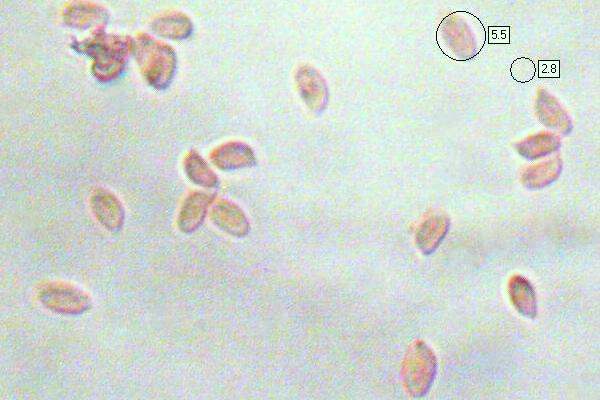Gymnopus confluens (Pers.) Antonín, Halling & Noordel. - Clustered Toughshank
Phylum: Basidiomycota - Class: Agaricomycetes - Order: Agaricales - Family: Marasmiaceae
Distribution - Taxonomic History - Etymology - Identification - Culinary Notes - Reference Sources
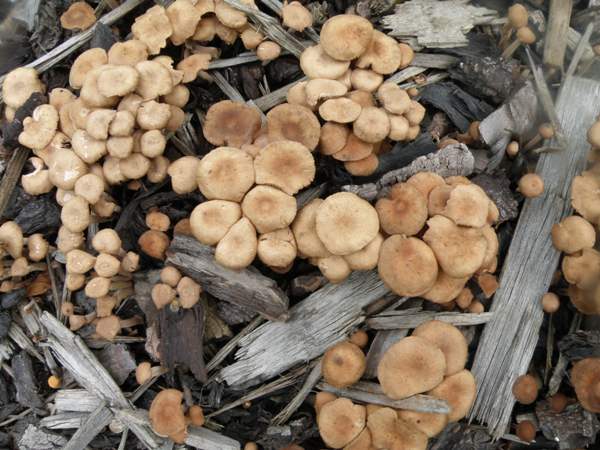
The densely packed clusters and upright stems of this little woodland mushroom immediately distinguish it from other, larger toughshanks. Particularly under deciduous hardwood trees but also occasionally in conifer forests, crowds of these pale caps jostle with one another and often form impressive fairy rings. Although they may appear to be sprouting from the forest floor or in grass at woodland edges, there is often buried rotten wood (their staple diet) just below the surface.
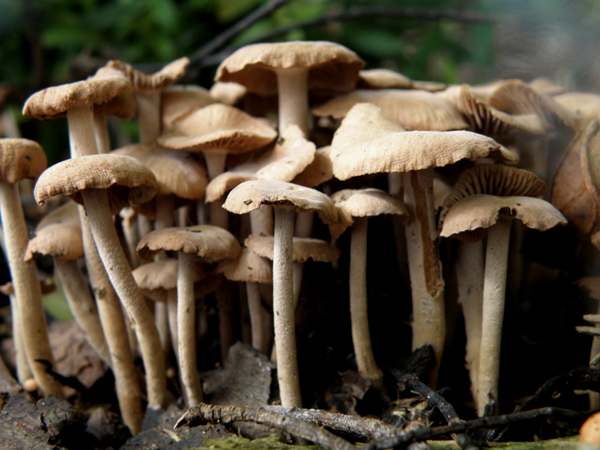
Distribution
Very common and widespread throughout Britain and Ireland, the Clustered Toughshank also occurs in most temperate countries on mainland Europe and in Asia. This species is also found in many parts of North America.
Taxonomic history
The Clustered Toughshank was described in 1796 by Christiaan Hendrik Persoon, who established the basionym of this species when he gave it the binomial scientific name Agaricus confluens. It was as Collybia confluens, a name given to it in 1871 by German mycologist Paul Kummer, that this woodland mushroom was generally known until very recently.
The scientific name Gymnopus confluens dates from a 1997 publication by Vladimir Antonín, Roy Halling and Machiel Noordeloos.
Synonyms of Gymnopus confluens include Agaricus confluens Pers., Agaricus ingratus Schumach., Agaricus archyropus Pers., Marasmius archyropus (Pers.) Fr., Collybia confluens (Pers.) P. Kumm.., Collybia hariolorum, Collybia confluens var. confluens (Pers.) P. Kumm., Collybia ingrata (Schumach.) Quél., and Marasmius confluens (Pers.) P. Karst.
Etymology
Gymnopus, the generic name, comes from Gymn- meaning naked or bare, and -pus meaning foot (or, in the case of a mushroom, stem). The specific epithet confluens comes from Latin and means clustered.
Identification guide
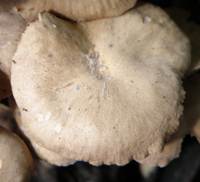 |
Cap3 to 5cm across; convex becoming bell shaped, sometimes flattening with an umbo; hygrophorous, flesh pink, becoming wrinkled and almost white when dry. |
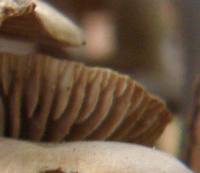 |
GillsAdnexed; narrow; crowded; cream or pale buff. Stem4 to 8cm long and 3 to 5mm diameter; laterally compressed; velvety; pinkish buff, paler towards apex, white and downy at base; no ring. |
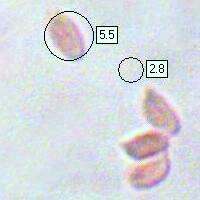 |
SporesElongated ellipsoidal or teardrop-shaped, smooth, 6-9.5 x 2-4µm. Spore printWhite. |
Odour/taste |
Not distinctive. |
Habitat & Ecological role |
In all kinds of deciduous woodland and occasionally in conifer plantations, on the forest floor, often where dead wood is buried. |
Season |
June to October in Britain and Ireland. |
Similar species |
When they are dry, Deceivers, Laccaria laccata, become very pale, and although not generally found in dense bunches they could be confused with Clustered Toughshanks. |
Culinary Notes
Gymnopus confluens is recorded as 'edible but worthless' in many field guides: the cap flesh is so thin and insubstantial and the stems so tough that Clustered Toughshanks are not worth considering as a culinary collectible.
Reference Sources
Fascinated by Fungi, 2nd Edition, Pat O'Reilly 2016, reprinted by Coch-y-bonddu Books in 2022.
Dictionary of the Fungi; Paul M. Kirk, Paul F. Cannon, David W. Minter and J. A. Stalpers; CABI, 2008
Taxonomic history and synonym information on these pages is drawn from many sources but in particular from the British Mycological Society's GB Checklist of Fungi.
Fascinated by Fungi. Back by popular demand, Pat O'Reilly's best-selling 450-page hardback book is available now. The latest second edition was republished with a sparkling new cover design in September 2022 by Coch-y-Bonddu Books. Full details and copies are available from the publisher's online bookshop...
